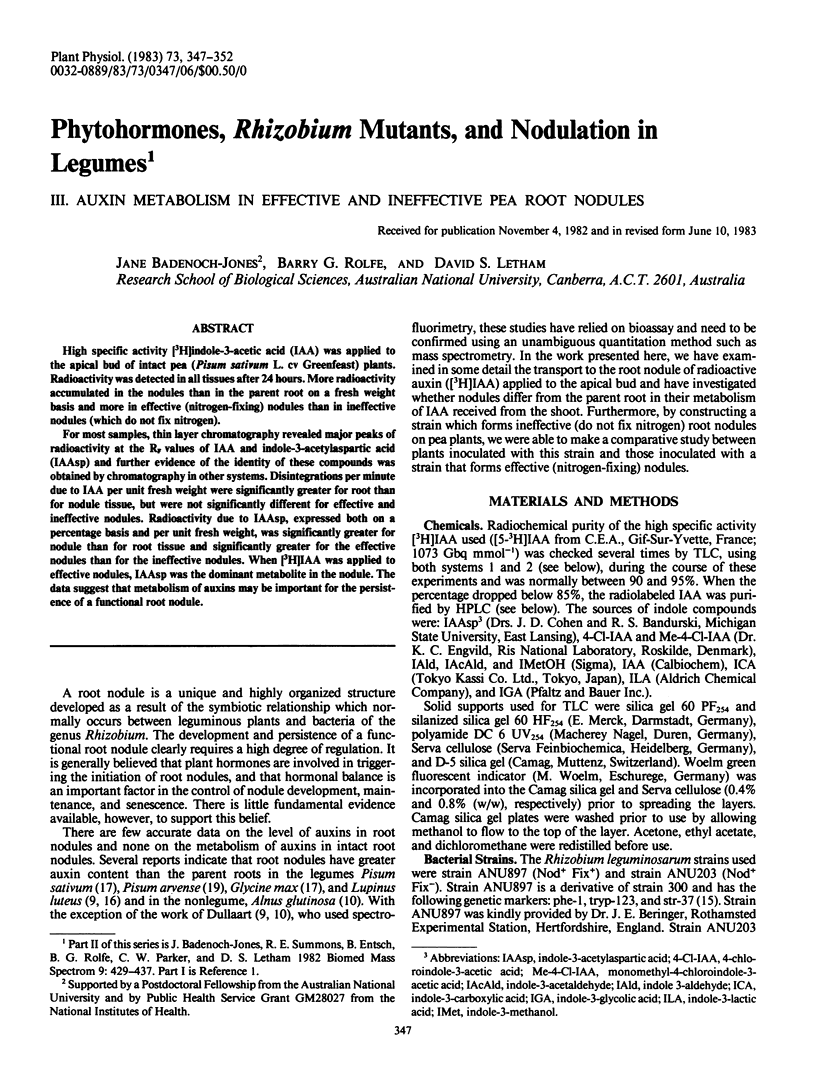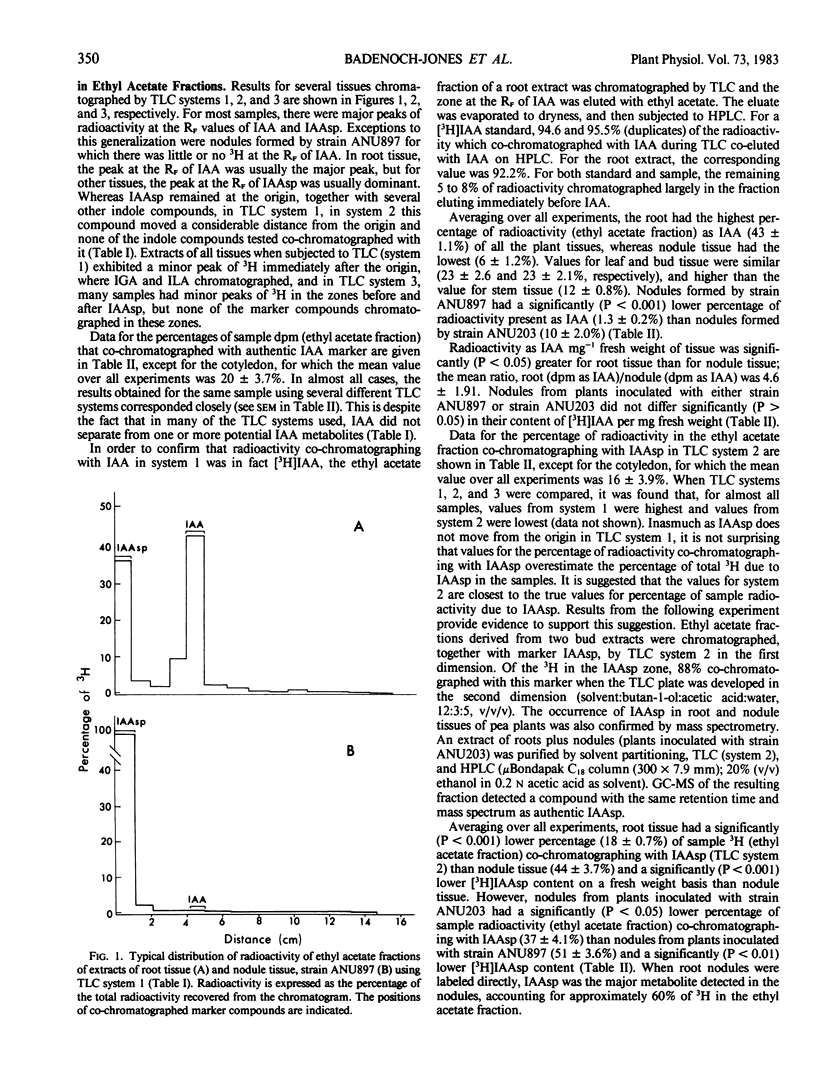Abstract
High specific activity [3H]indole-3-acetic acid (IAA) was applied to the apical bud of intact pea (Pisum sativum L. cv Greenfeast) plants. Radioactivity was detected in all tissues after 24 hours. More radioactivity accumulated in the nodules than in the parent root on a fresh weight basis and more in effective (nitrogen-fixing) nodules than in ineffective nodules (which do not fix nitrogen).
For most samples, thin layer chromatography revealed major peaks of radioactivity at the RF values of IAA and indole-3-acetylaspartic acid (IAAsp) and further evidence of the identity of these compounds was obtained by chromatography in other systems. Disintegrations per minute due to IAA per unit fresh weight were significantly greater for root than for nodule tissue, but were not significantly different for effective and ineffective nodules. Radioactivity due to IAAsp, expressed both on a percentage basis and per unit fresh weight, was significantly greater for nodule than for root tissue and significantly greater for the effective nodules than for the ineffective nodules. When [3H]IAA was applied to effective nodules, IAAsp was the dominant metabolite in the nodule. The data suggest that metabolism of auxins may be important for the persistence of a functional root nodule.
Full text
PDF





Selected References
These references are in PubMed. This may not be the complete list of references from this article.
- Badenoch-Jones J., Summons R. E., Djordjevic M. A., Shine J., Letham D. S., Rolfe B. G. Mass spectrometric quantification of indole-3-acetic Acid in Rhizobium culture supernatants: relation to root hair curling and nodule initiation. Appl Environ Microbiol. 1982 Aug;44(2):275–280. doi: 10.1128/aem.44.2.275-280.1982. [DOI] [PMC free article] [PubMed] [Google Scholar]
- Bandurski R. S., Schulze A. Concentration of Indole-3-acetic Acid and Its Derivatives in Plants. Plant Physiol. 1977 Aug;60(2):211–213. doi: 10.1104/pp.60.2.211. [DOI] [PMC free article] [PubMed] [Google Scholar]
- Bandurski R. S., Schulze A. Concentrations of Indole-3-acetic Acid and Its Esters in Avena and Zea. Plant Physiol. 1974 Sep;54(3):257–262. doi: 10.1104/pp.54.3.257. [DOI] [PMC free article] [PubMed] [Google Scholar]
- Djordjevic M. A., Zurkowski W., Rolfe B. G. Plasmids and stability of symbiotic properties of Rhizobium trifolii. J Bacteriol. 1982 Aug;151(2):560–568. doi: 10.1128/jb.151.2.560-568.1982. [DOI] [PMC free article] [PubMed] [Google Scholar]
- Hall P. L., Bandurski R. S. Movement of Indole-3-acetic Acid and Tryptophan-derived Indole-3-acetic Acid from the Endosperm to the Shoot of Zea mays L. Plant Physiol. 1978 Mar;61(3):425–429. doi: 10.1104/pp.61.3.425. [DOI] [PMC free article] [PubMed] [Google Scholar]


